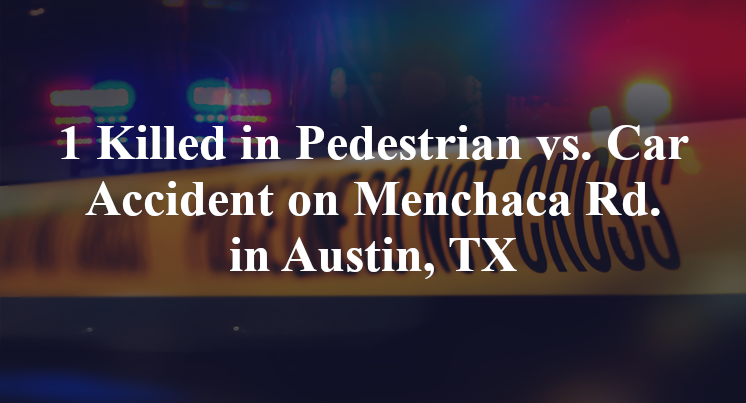1 Killed in Pedestrian vs. Car Accident on Menchaca Rd. in Austin, TX
Travis County, TX — June 18, 2025, one person was killed due to a pedestrian versus car accident at approximately 9:45 p.m. along Menchaca Road.
According to authorities, the accident took place on Menchaca Road in the vicinity of the Kaiser Drive intersection.

Details surrounding the accident remain scarce. Officials indicate that, for as yet unknown reason, a pedestrian was struck by a motor vehicle. The victim reportedly sustained fatal injuries due to the accident and was declared deceased at the scene. Additional information pertaining to this incident is not available at this point in time. The investigation is currently ongoing.
Commentary by Attorney Michael Grossman
When a pedestrian is killed after being struck by a vehicle—noting that this happened around 9:45 p.m.—that raises serious questions that don’t go away just because the public details are thin. These crashes come with layers of uncertainty that deserve deep scrutiny.
1. Did the authorities thoroughly investigate the crash?
A nighttime pedestrian crash demands precision. Investigators should have measured the point of impact, mapped how the vehicle approached, and reviewed whether the driver took any evasive action—like braking or swerving—before it happened. Those details help determine whether the incident was avoidable. But if the scene wasn’t documented with laser mapping or 3D reconstruction, we may never know how much time—or space—there was to prevent the collision. Many times, agencies lack the tools or training to go beyond “this is where it happened,” especially in less illuminated settings.
2. Has anyone looked into the possibility that a vehicle defect caused the crash?
Even in pedestrian impacts, a vehicle's condition matters. Did the headlights work properly? Were the brakes providing full stopping power? Was there a fault with automated systems—like pedestrian detection or automatic emergency braking—that could have failed? If those systems weren’t functioning as intended, they could’ve contributed to the crash. But without a mechanical inspection of the vehicle, such issues might never be identified.
3. Has all the electronic data relating to the crash been collected?
A modern vehicle can tell a lot about what happened just before an accident. Data like speed, braking, or activation of sensors can show whether the driver had time to react—or if the systems didn’t respond fast enough. Combine that with nearby surveillance footage, traffic camera snaps, or phone metadata from the driver or witnesses, and you can build a clearer picture. If none of those were secured immediately, the window to get that information starts closing fast.
Assuming a pedestrian crash is just an accident is like stopping halfway through the story. We owe it to the truth to ask the full set of questions—and to demand answers that go deeper than the surface.
Key Takeaways:
- Pedestrian crashes at night need full scene documentation to uncover visibility and reaction factors.
- Vehicle mechanical and electronic systems—especially those reliant on detection tech—should be inspected.
- Onboard and environmental data are often the only ways to clarify what happened in the moments before impact.

*We appreciate your feedback and welcome anyone to comment on our blog entries, however all visitor blog comments must be approved by the site moderator prior to showing live on the site. By submitting a blog comment you acknowledge that your post may appear live on the site for any visitors to see, pending moderator approval. The operators of this site are not responsible for the accuracy or content of the comments made by site visitors. By submitting a comment, blog post, or email to this site you acknowledge that you may receive a response with regard to your questions or concerns. If you contact Grossman Law Offices using this online form, your message will not create an attorney-client relationship and will not necessarily be treated as privileged or confidential! You should not send sensitive or confidential information via the Internet. Since the Internet is not necessarily a secure environment, it is not possible to ensure that your message sent via the Internet might be kept secure and confidential. When you fill out a contact or comment form, send us an email directly, initiate a chat session or call us, you acknowledge we may use your contact information to communicate with you in the future for marketing purposes, but such marketing will always be done in an ethical way.